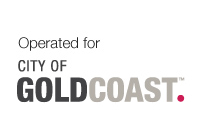The Gold Coast is a rapidly growing residential and tourist area, with substantial rural, commercial and parkland areas. Gold Coast encompasses a total land area of nearly 1,400 square kilometres and features significant beaches, coastline, waterways, islands, national parks, state forests, rainforests and hinterland areas. The Gold Coast is a rapidly growing residential and tourist area, with substantial rural, commercial and parkland areas. Most of the population is in the linear urban coastal area, to the east and west of the Gold Coast Highway (between Coolangatta and Paradise Point). Tourism is a major industry with many resorts, holiday accommodation places, theme parks and golf courses. Much of the rural area is used for sugar-cane growing, dairy farming, cattle grazing and tropical fruit farming.

NOTE: The land use shown in the map is derived from ABS Mesh Block categories. Mesh Blocks broadly identify land use and are not designed to provide definitive land use. It is purely an indicator of the main planned land use for a Mesh Blocks. For more information please refer to ABS Mesh Block categories.
Transportation Networks
- Gold Coast Highway
- Pacific Highway
- Pacific Motorway
- Gold Coast (Coolangatta) Airport
- Beenleigh and Robina railway lines
- numerous buses
Distances
- Brisbane CBD 80km
- Brisbane Airport 90km
- Port of Brisbane 80km
Major Industrial Precincts
- Arundel (north-east)
- Ashmore (north-east)
- Beenleigh (around Logan River Road)
- Burleigh Heads (west)
- Currumbin Waters (north)
- Helensvale (south)
- Molendinar
- Nerang (south-east)
- Ormeau (east of Pacific Motorway)
- Stapylton
- Varsity Lakes (south)
- Yatala
